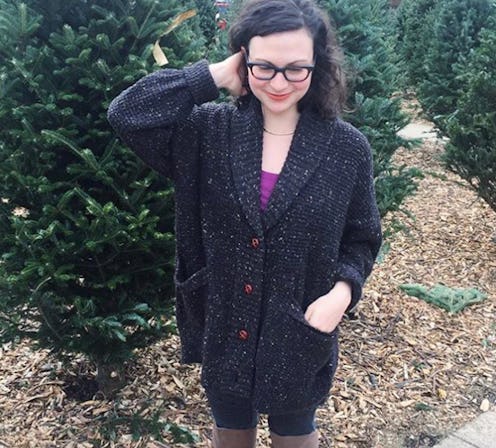Fashion
How I Dress Like A Woman

The phrase "dress like a woman" probably calls to mind tight skirts and heels, the kind of outfits that women have historically been encouraged to wear, particularly when a man is saying someone ought to dress like a woman, as President Donald Trump has allegedly done with his employees. But in 2017, what, exactly is that supposed to mean? In an era when women wear everything from suits to miniskirts to jeans and leather jackets, and since fashion is becoming increasingly genderless, the concept that dressing like a woman could mean one particular type of outfit is mercifully beginning to seem archaic. How I dress like a woman is unique to me and my personal style — there is simply no formula.
For a long time, I thought fashion was about rules — rules about your body type, your height, your gender. As a young kid, I avoided pants because I had internalized the message that certain styles were "for boys" and that I shouldn't wear them if I wanted to be perceived as pretty and stylish. Even as I got a bit older and started to embrace the concept of wearing whatever I liked and not what would impress someone else, it took me awhile to shake the idea that high heels were always sexier than flats and that I shouldn't "hide" my body under loose-fitting silhouettes.
Getting dressed as a woman is always a loaded endeavor. We're told to cover up our bodies because they are "distracting," but also often shamed for challenging gender norms with fashion if we wear a suit and tie for a formal occasion. Our outfits are blamed when we are sexually assaulted, but we're also encouraged to dress a certain way to attract men. This not only ignores the fact that many women are not interested in relationships with men, but also that women don't always dress with the primary goal of stimulating sexual appetite.
When I read about the reports that President Donald Trump allegedly encourages female staffers to "dress like women," which I have no doubt refers to a very narrow concept of womanhood — one in which stereotypical femininity is paramount — I remembered something a college acquaintance once said to me while I was bemoaning being single for the third year in a row. As we trudged up a hill toward the dorms following a meal at the campus dining hall, she told me that guys didn't notice me because "I didn't dress slutty enough" and wore clothing that downplayed my large chest. Not only was it rude, it implied that no one would want to date me unless I changed one of the most fundamental aspects of my personality — the way I dress.
Fashion is highly personal, and many women (and men and non-binary individuals, in fact) use their outfits to send a message to the world about who they are. I dress like a woman by embracing my own unique personal style, and by wearing whatever the hell I want to wear, whenever I want to wear it. I dress like a woman by not choosing clothes based on the so-called rules for my body type, but rather what makes me feel comfortable and at ease with myself. I dress like a woman by curating a wardrobe that I love.
Developing my sense of fashion has been a huge part of helping me define myself. As I've become more confident and sure of my place in the world, I've learned how to shed certain expectations regarding how I should look and act. It isn't the same for everyone, and I can't ignore my immense privilege when talking about this issue: I am a petite, cis white woman who favors the typically feminine clothing Trump would probably consider appropriate for the office. Many others are not awarded the opportunity to dress however they like, or are judged far more harshly than I likely would be for daring to challenge the norm.
But it's important to remember that womanhood is not determined by a piece of cloth arranged in the shape of a skirt. A woman is dressed like a woman whether she is wearing a t-shirt and jeans, a pair of hospital scrubs, a suit and bow tie or a prom dress. I dress like a woman simply by getting dressed.